introduction 1
On March 12, 2014, Google invited the world to celebrate the 25th anniversary of the internet, which was born, in the company’s view, when the first browser was released. Although early network communications date back to 1969, only those with advanced technical skills could access them. With the creation of browsers, the internet opened up to many more users; and Google, with the help of early government investments in it, began – to become one of the largest companies in the world. By 1993, the internet was so widespread that the New Yorker magazine had the idea to publish a sketch that remains, since then, the archive with the most online visits for the magazine. It showed a dog sitting in front of a computer screen saying to another “on the internet, nobody knows you’re a dog”.
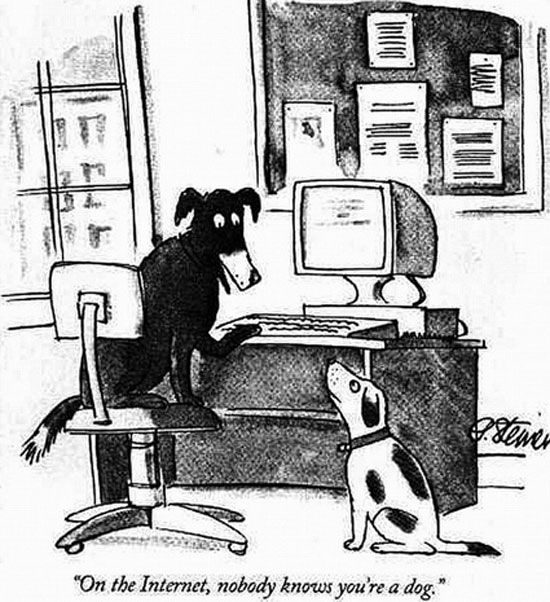
At the time when the technology world was celebrating the maturation of the internet, the “Next Internet” was progressing beyond its infancy. Google knows this well, as was evident in a 2015 interview when the head of the company’s research division declared that the search engine, which played a defining role in shaping the internet, had now become a “legacy” system (a euphemism for “still useful but soon destined for the dustbin”). Now, Google, along with other large companies and small startups, hopes to develop new forms of portable-friendly search engines that fit with the Next Internet.
It would be bold to make any precise prediction about this new level of the digital world, but it is reasonable to conclude that the Next Internet will disrupt the world much more than its older sibling. The Next Internet is still far from being fully formatted and still carries some of the characteristics of the one born in 1989. But it is growing rapidly and creating challenges from the perspective of its original inspirers for a digital world that is democratic, decentralized, and pluralistic. The Next Internet unites three already interconnected systems: cloud computing, big data analytics technology, and the internet of things. It promises businesses and governments centralized data storage and services from massive digital factories that process and analyze massive information flows collected from networked sensors in every consumer device, industry, and service provider, as well as in living bodies. However, it also creates significant challenges for the environment, privacy, and labor.
The Next Internet: fundamental principles
cloud computing
The brilliance of the authentic internet was that it indicated the possibility of a decentralized world composed of servers that would communicate with one another, thus connecting their users through simple and universal software specifications. This began to change with the development of cloud computing, which constitutes the first structural element of the Next Internet. The cloud is a system for storing, processing, and distributing data, applications, and software through the use of remote computers that provide on-demand computing services for a fee. Familiar examples are Google’s Gmail, the online digital storage company Dropbox, and Microsoft’s Office, which shows an increasing trend in distributing its widely used text processor via the cloud, as opposed to a monthly charge.
The cloud allows businesses, government services, and individuals to move their data from visible and/or personal computers to large data centers that have been created at various points around the planet. What appears as a limitation of digital storage space via the cloud has already paved the way for rapidly growing companies that generate profits from storage charges, from services provided online, and from selling their customers’ data to companies that advertise products and services. State surveillance mechanisms such as the NSA and the CIA also work in collaboration with cloud companies, such as Amazon, to meet their security and surveillance requirements. What was originally a structure of distributed servers in the authentic internet has evolved into a centralized, global system of data centers, each containing tens or hundreds of thousands of interconnected servers, mostly managed by private corporations and state services of the military and surveillance. The well-known scientific journal Nature clearly demonstrated the practical difference between the authentic internet and the cloud-based one when it called on the US government to establish a cloud commons for biological research, especially in genetics. It made this appeal because research in large data centers is considerably easier and faster when conducted via the cloud than through servers installed in university research centers. This involves a time difference of a project taking about 6 weeks via the cloud versus 6 months via the old internet.
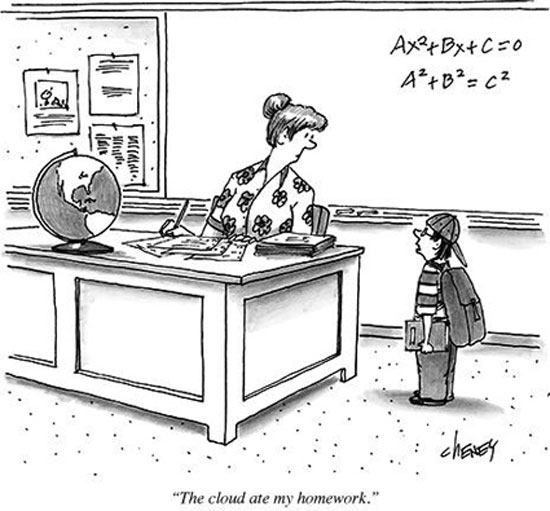
Triggered by such an explosive multiplication of digital research capabilities, and even more so by a massive advertising campaign to convince individuals and organizations to move to the cloud, including expensive ads during the 2011 Super Bowl finale, the cloud is now familiar to most internet users. Thus, it is justified to say that if the New Yorker sketch with the dogs illustrated the birth of the internet, then the next one that illustrates the internet shift is the one that accompanied the magazine’s 2012 advertisement, showing a sad little student telling his teacher “the cloud ate my homework.”
The cloud looks more like a data factory than a warehouse, because it processes data to produce services such as advertising, accounting, customer relations, or legal and financial services. This makes companies and government services partners in providing services, along with the businesses that own and control the data centers. It also constitutes an important step toward a centralized, global, and fully commercialized internet. The major cloud providers are already large corporations, including already well-known names such as Amazon (already by far the largest cloud business), Microsoft, IBM, and Google. Through service agreements, most of these are already largely integrated with the military and police arms of the government. Amazon, for example, sells storage space and cloud services to both the CIA (through a $600 million contract) and the NSA (National Security Agency). Meanwhile, government services that require the highest possible levels of security are building their own clouds, such as the NSA, which inaugurated one of the largest in the world in 2015 in a remote mountainous area in Utah.
big data
The analytical techniques of big data constitute the second pillar of the Next Internet. Despite the proliferation of new terms, such as data science, that fuel enthusiasm for big data, there isn’t much that a sociologist would consider innovative in this narrative. Broadly speaking, it involves the collection of large, often massive, and always continuously gatherable quantitative data, and the examination of their particular ways of correlation, in order to draw conclusions about past behaviors and trends, and to make predictions about future ones.
Facebook, for example, collects data arising from its nearly 1.3 billion users and correlates the likes generated for anything related to celebrities, companies, and politicians, to infer opinions about society, goods, and more. This allows the company to create user profiles which it then sells to advertisers, giving them the ability to target Facebook users with personalized ads sent to their pages on Facebook. Google does exactly the same for search topics and gmail content, and Amazon creates user profiles based on searches and purchases through its site. Given the limitations in analyzing correlated quantitative data, particularly due to the absence of context, theory, and subjectivity (qualitative data are either ignored or difficult to translate into numbers), this kind of analysis is not always accurate. Instances of big data failures, in projects such as seasonal flu predictions or creating models for economic development planning, are multiplying. As are the opportunities for deliberate manipulations in their use for profit. However, for simple questions, such as what the likes and dislikes are in demographic group X or Y, or for drawing conclusions about users based on their friendships or followers, the massive and large data repositories available for analysis in the digital factories that constitute the cloud offer good performance for both businesses and governments investing in cloud data centers and big data analytics. It is reasonable to be concerned that the one-sided turn to big data for research purposes leads to what one might call digital positivism.
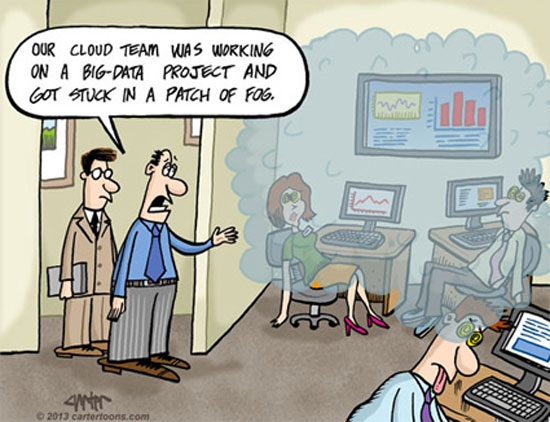
internet of things
The cloud and big data are essentially increasing from the development of the internet of things. From the “watches” that control blood pressure to refrigerators that remind you to buy milk, from assembly lines where “robots” work to drones that transport weapons, the internet of things will have obvious consequences for individuals and societies. The internet of things is a system that installs sensors and data processing devices in everyday objects or even production means (let’s say robotic arms), and connects them to networks that collect and use data in their operation. We use the rather clumsy term internet of things because, unlike the internet we know, which connects people, the internet of things essentially connects objects. The sensors of a refrigerator form a network of things that record what is inside and how it is used. The internet of things became possible thanks to developments in the miniaturization of scanning devices and the ability to be loaded with enough processing power to monitor activities, analyze data and extract conclusions that are promoted through electronic networks.
A 2015 report by the private think tank McKinsey concluded that by 2025 the Internet of Things (IoT) will have an economic impact between 3.9 and 11.1 trillion dollars; an amount (in the latter scenario) equivalent to 10% of global GDP. Even if we cut down on the exaggeration that often accompanies technological forecasts aiming to boost corporate work cycles for which they are made, this report is interesting because it highlights the consequences and identifies the sectors that will be affected. According to the report, it is the industrial sector that leads the way, as monitoring capabilities in production allow tighter control and efficiency in factories and global supply chains. But this process will extend, McKinsey argues, to offices, commerce, city management, and all transportation, as automated vehicles are already appearing on roads and highways are becoming “smart” through sensors installed everywhere. High-level monitoring will also spread to housing, promising greater control over heating and cooling, food orders, and general supplies. And in bodies, where sensors will continuously monitor physical condition, blood pressure, heart function, and the status of vital organs. This sounds futuristic and, depending on one’s perspective, either dystopian or utopian; but it shows the power of new technologies and the substantial differences between the original internet and its successor.
The Next Internet: real concerns
Businesses quickly capitalized on their dominant position in the digital world and launched into the Internet of Things. Key examples include Google’s driverless car, Apple’s wearable devices, and Amazon’s installation of robots in warehouses to accelerate order fulfillment operations. Amazon is also preparing drones for order deliveries, and developing entirely new forms of packaging for shipments to its warehouses that include machines for automatically collecting goods from shelves. The Internet of Things has also breathed new life into an old industrial firm, General Electric, which reinvented itself in the ’90s, moving from industrial manufacturing to the financial sector. GE has now abandoned the highly regulated world of banking to emerge as a dominant player in producing devices essential for the Internet of Things, while also using them in its own industrial processes. Alongside business benefits, the Internet of Things offers great promise to the military, as it enhances the capabilities of using automated weapons systems through robotics and weapon transport via drones, beyond improving soldier management.
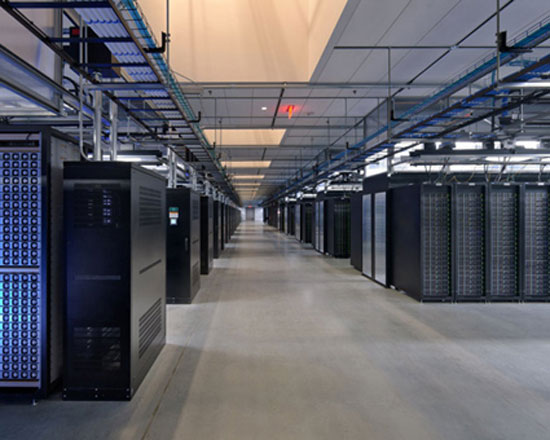
enhanced data control
A significant and valuable result of monitoring every device and connecting it to a global network of things is the exponential growth of commercially exploitable data. Today, according to a Cisco report, only 1% of objects worldwide are interconnected. Therefore, the great promise of the Internet of Things is indeed very large. In any case, there is a forecast that by 2020, 50 billion connected devices will have been integrated into the Next Internet, collecting and transmitting data 24 hours a day, 365 days a year. Exploiting this wave of data will require new cloud data centers and a major expansion of data analysis. As McKinsey puts it… So far, most of the data from the Internet of Things is not being used. For example, on an oil mining platform that has 30,000 sensors installed, only 1% of the data is monitored. This is because this information is mainly used for anomaly detection and control – not for optimization and prediction, which produces the greatest intended value… How data will be utilized, both internally within businesses and as a market commodity, is one of the biggest challenges facing the Internet of Things industry.
Most of what has been written about the Next Internet is technical or in favor of promoting it, emphasizing the engineering aspect of its creation, or advertising its capabilities through excessive rhetorics that constantly invent new terms, about frictionless capitalism and singularity. Only now have we begun to see some discussion about the serious political issues that arise in a world of massive data centers, continuous analysis of human behaviors, and ubiquitous connectivity. These issues include the concentration of control of the Next Internet in a handful of major American companies and the military-police complex; the environmental consequences of building and managing massive data centers and their power systems; threats to privacy and security; and the consequences of automated systems on human labor.
Two things emerge at this initial stage of the Next Internet industry’s formation: its already significant concentration and its domination by American companies. Leading the pack is Amazon, which controls over a third of the cloud computing market and has a strong presence in big data and the Internet of Things. This company was among the first to create a “one-size-fits-all” cloud service, which became attractive to both individuals and organizations due to its simplicity and low pricing. Some argue that Amazon, along with its competitors Google and Microsoft, engage in the less-than-savory practice of aggressive below-cost pricing for their cloud services, while simultaneously increasing prices in other areas of their business where they already hold substantial market share. Facebook and Apple are also on the list of companies leveraging their control over the current Internet to gain a leading position in the Next Internet. Traditional firms such as IBM, Oracle, HP, and Cisco have rushed to shift their focus from serving disappearing IT segments to establishing themselves in the new digital world. However, their need to cannibalize old systems and restructure their organizations holds them back. Moreover, there are specialized companies focusing on specific aspects of the Next Internet systems, such as Rackspace and Salesforce.com, which are nevertheless constantly undermined by the encroachments of the dominant players. A potentially significant but lesser-known force in the Next Internet arena is General Electric, which appears to be heavily investing in reinventing factories through Internet of Things technologies.
Technology historians will recognize the similarity of this process to the early phases of electrification, the telegraph, telephony, and television. In all these cases, legislative regulation and state ownership were necessary to control abuses and increase accessibility at an acceptable cost. However, such remedies do not seem likely to be employed in a world where legislative regulations and public ownership are no longer fashionable. Moreover, as has happened before, dominant companies benefit from their close ties with military and security circles, as they provide them with Next Internet services and collaborate with them more than their customers can understand. In fact, the close ties with the American Pentagon, including its well-funded research arm DARPA, as well as with the NSA and the CIA, help explain why there are no threats to American hegemony in the Next Internet coming from Europe, whose telecommunications companies were once global leaders.
China is the only serious competitor. Here, the government has invested heavily in Next Internet technologies, going so far as to incorporate them into its five-year plans and create entire cities using exclusively the cloud. This has benefited leading Chinese companies such as Alibaba, Baidu, Huawei, and Tencent, among others. Signaling its intention to challenge American supremacy, Alibaba has established facilities in Silicon Valley and, like other Chinese companies, relies on China’s giant domestic market to expand internationally.
A look at other issues shows why the concentration of corporate power is such a serious matter and why it is so essential for societies to begin understanding the importance of public intervention in developments.
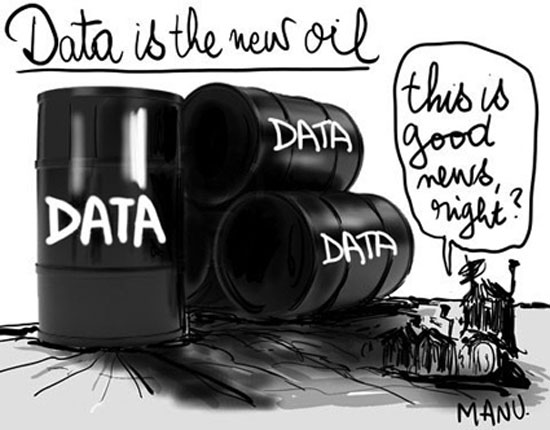
environmental and privacy issues
Because the digital world consists of invisible electrons, there is a tendency to consider it immaterial. Nothing could be more wrong, and the faster this reality is recognized, the more likely it is that the environmental problems associated with the Next Internet will be revealed. Cloud data centers are very material constructions, and as they begin to spread around the world, many environmental issues are emerging. It is estimated that in 2017 data centers will consume 12% of global electricity production. Moreover, consumer demand for 24/7 services requires various levels of backup power generators, including some, such as diesel generators, which have been proven to cause cancers. Additionally, data centers require large and continuous water supplies to cool their systems, which raises serious policy issues in places like the American West, where many consecutive years of drought have depleted water reserves. On their part, data center owners use their economic power to pressure local governments to offer them tax breaks, low electricity prices, and leniency regarding environmental legislation.
Businesses, in order to address the pressure from environmental organizations, especially Greenpeace, are integrating solar systems and other forms of renewable energy into the electricity supply of data centers they own. As data needs grow, it is necessary to systematically regulate, including a broader approach to electricity price reductions. Beyond what will happen in this area, the main source of energy consumption of the Next Internet is the sensors that will be integrated into billions of connected devices and communication systems that will connect people and things through various wireless networks. A world with constantly connected and ubiquitous devices is enough to make the saliva of the CEOs of energy production companies flow, especially the lobby of the coal industry, which sees the Next Internet as an opportunity to achieve what a study by the American Academy of Sciences calls the rebirth of carbon. According to a study funded by the coal industry: The nature of the moving internet, a central characteristic of the architecture of the cloud, requires much more energy than wired networks… Trends promise faster and not slower development of the carbon technology…
Privacy and security issues arise in an exponential way in relation to the Next Internet as the greater connectivity offers opportunities for critical failures (of the system) but also hacking. Indeed, a technology journalist has described the internet of things as the largest surveillance infrastructure ever. Approximately 40% of the global population uses the internet at least once a year, and as one should expect, access is concentrated in developed countries and urban centers. With only 1% connectivity between things, we are still far from the promised land of universal computing. But even at this relatively low level, technical problems and criminal activity plague the system. In a single day in 2015, the entire air fleet of United Airlines was grounded, the New York Stock Exchange was closed for several hours, and the computers of the Wall Street Journal simply stopped working. All of this was explained as a result of technical “errors.” While this disaster was being learned, the American government announced that hackers had stolen the personal data of 22.1 million employees of the federal government, contractors, and their families and friends, which contained various information for various checks. The theft included more than one million sets of fingerprints.
It doesn’t need explanation why many are concerned about the consequences of technical failures and hacking in a world where people and objects are increasingly connected day after day. Who would want their car or, even worse, their pacemaker, to be accessed by hackers? Beyond that, the most significant risks come from data-hungry businesses and governments. So it is, the greatest attraction of universal computing is the valuable data of human behaviors and device performance. This offers opportunities, as businesses improve targeted advertising and product development beyond the raw systems that the current internet allows; and governments deepen the control of citizen behavior and their resources. Think of the commercial benefits for insurance companies that could constantly monitor their clients’ health, their behavior while driving, and the condition of their homes; or the benefits for governments and other services through the recording and control of citizen behavior and their interactions with each other and with the objects of their daily lives; or the benefits for employers who already require workers to wear sensors on their skin for universal performance monitoring. Discussions about algorithmic policing, euphemistically called “predictive analytics,” greatly concern privacy advocates as they attract significant interest from businesses and governments.
The consequences of the Next Internet on jobs and the characteristics of work are also an important political issue. At first glance, there is the temptation to think “here we go again,” as the impact of technology on work has been discussed for many years, especially after the end of World War II when Norbert Wiener sparked a public debate by predicting mass job losses due to automation. Furthermore, the Next Internet is also likely to create jobs, including traditional construction specialties, in the construction of the global network of data centers, in the new professions of data science, and in the control, maintenance, and supervision of networked objects. There is another reason why it is important to approach the impact of computing technology on jobs and the economy with caution. Relevant research documents that overall employment is more closely linked to the level of economic activity rather than information technology, and, apart from the last few years of the 1990s when large-scale investments were made in hardware, the long-awaited productivity increase from information technology has not yet been realized.
However today there are significantly more opportunities for new technologies to reduce human labor, especially cognitive professional work. A specialist defines cloud computing as “nothing more than the next step in the outsourcing of your IT processes.” This corresponds to what a Gartner Associates researcher summarizes: In the long term, the value offered by IT technology is not the support of human labor but its replacement. The Next Internet creates direct opportunities for businesses to rationalize the processes related to IT technology. Again from Gartner: “CEOs believe that their data centers, their servers, their desktop computers and the applications they use are very inefficient and must be rationalized over the next decade. We believe that the people related to these inefficient assets will be rationalized in large numbers with this evolution.”
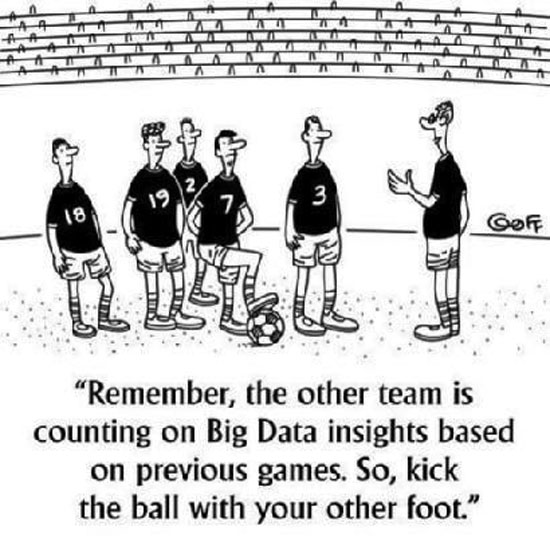
The businesses of the Next Internet claim that their systems will break the forms of business organization that began when the first large computers entered the production facilities. Then all businesses and government agencies supported that they were important to operate their own departments of computational technology and, for larger organizations, their own data centers. The supporters of the Next Internet insist that it is no longer important to create and maintain thousands of infrastructures specialized in each business separately when a handful of data centers can satisfy the demand at a lower cost and with significantly less technical staff. This process has begun and some initial surveys show that even with a relatively small reduction in IT departments, businesses save a percentage between 15% and 20% of their expenses in this area.
The next Internet also makes possible the extensive rationalization of practical knowledge and creative work. This is because the work of these installations is increasingly involved in the production, processing, and distribution of information. According to an observer, “In the next 40 years, systems analysis will replace much of what a cognitive worker does today.” A 2013 report concluded that half of the workforce in the US is directly threatened and is in the category of high risk for losing their jobs. Whatever the exact size, there is no doubt that the current trend is the use of software to transfer the work of the cognitive worker to machine systems. We are now beginning to see the consequences in education, health, legal issues, accounting, finance, sales, and media. The private and public sectors are encouraged to outsource everything except their core activities to companies like salesforce.com, which specializes in the management of large databases of customer information, a job that traditionally was done by advertising and sales departments within companies.
The extension of outsourcing to computers raises serious questions regarding the global flexible production system. According to Gartner: This development will impact all economies – especially emerging ones, such as India, which currently dominates technological outsourcing. The Next Internet also expands the range of possible outsourcing practices. It may be an overstatement for Forbes magazine to declare: “Now we are all outsourcers,” but the following observation seems quite plausible: “Outsourcing is no longer defined simply by multi-million dollar megadeals where a company’s IT departments’ work is transferred to another company. Rather, bits and pieces of much smaller things are systematically converted into external entities. Amazon is pioneering this process with its Mechanical Turk, which charges individuals and organizations that outsource micro-tasks to a globally dispersed reserve army of workers who work online and are paid per piece. Combined with the design for warehouses full of robots that will locate, package, and ship items, and drones that will make deliveries, Amazon is at the forefront of the Next Internet to intensify labor worldwide. Workers at a Swedish company can confirm this as they open the entrance door to work every day via the RFID chip they have implanted under their skin, to facilitate monitoring and increase productivity.
translation : Z.S.
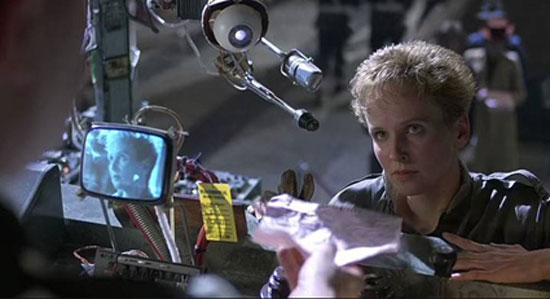
- Vincent Mosco is a professor of sociology at the Canadian Queen’s University and a professor of communications at Fudan University in Shanghai. The article was published in the journal Les Enjeux de l’information et de la communication, no. 18, in 2016. ↩︎
